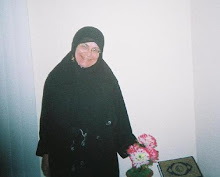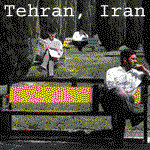Formalizing Apartheid Packaged as Peace Initiative
 Palestinian President Mahmoud Abbas meets with US President George Bush in New York, September 2007. (POOL/Omar Rashidi/MaanImages)
Palestinian President Mahmoud Abbas meets with US President George Bush in New York, September 2007. (POOL/Omar Rashidi/MaanImages)16 October 2007
by Neta Golan and Mohammed Khatib
Next month the US plans to host a regional meeting to discuss peace in the Middle East, or at least peace between Israel and the Palestinians. The maneuvering, deal making and negotiating about what will be on the table has been going on for some time. But the details of the agreement being discussed have been a well-guarded secret but for the steady flow of leaks and trial balloons. Deciphering this information combined with facts on the ground, one can put together a clear outline of Israel's "next generous offer."
Political maneuvers can be spun to sound good if the details are kept vague, but when held to scrutiny it becomes obvious that the upcoming Israeli offer is not so generous. Like the Oslo Accords and the "disengagement" from Gaza, the peace process being cooked now is a move to consolidate Israeli control of all of historic Palestine while taking a large portion of the Palestinian population off Israel's hands. The devil is in the details that follow.
The agreement on the table offers Palestinians what Israel's president Shimon Peres calls "the equivalent of 100 percent of the territory occupied in 1967." According to Peres, Israel will retain its major West Bank population centers, also known as settlement blocs, which Peres claims make up only five percent of the West Bank. In exchange Israel will offer to give the Palestinians the same amount of territory elsewhere. According to Peres, Israel will exchange land in Israel populated by Palestinians who hold Israeli citizenship. This will allow Israel to remove some of its Palestinian Arab population, whom most Jewish Israelis perceive as "demographic threat" to the nature of the Jewish state.
When Israeli politicians like Peres talk about retaining five percent of the West Bank, they do not include occupied East Jerusalem. Israel illegally and unilaterally annexed East Jerusalem in 1967-68. Hence, Israeli sources claim there are 250,000 Israeli settlers in the West Bank, completely discounting the estimated additional 250,000 settlers in occupied East Jerusalem.
Israel's settlement blocs are being created and built as you read these words. For years Israel has been creating settlement blocs on strategic land that will carve the West Bank into disconnected islands, maintain Israeli access to the West Bank water resources and surround and strangle Arab Jerusalem. The de facto annexation of this strategic 9.5 percent of the West Bank's land behind Israel's apartheid wall has already taken place. The "peace" process will simply make it official.
In March 2006 the newly formed Kadima party was elected to implement Ariel Sharon's "convergence plan." According to this plan, the non-strategic settlements outside of the settlement blocs would be dismantled. The evacuated settlers would be resettled in the "blocs" behind the wall that would in turn be annexed by Israel.
On 14 April 2004, President Bush wrote to then Prime Minister Ariel Sharon, "In light of new realities on the ground, including already existing population centers it is unrealistic to expect that the outcome of final status negotiations will be a full and complete return to the armistice lines of 1949 ..." This letter was subsequently ratified in both US Houses of Congress.
Israel took this as a green light from the US to keep whatever areas they can fill with settlers. Therefore, despite the Road Map requirement that Israel freeze settlement expansion, Israel accelerated the creation of so-called "existing" settlement blocs in strategically important areas.
In the same letter to Sharon, Bush also stated, "It seems clear that an agreed, just, fair and realistic framework for a solution to the Palestinian refugee issue as part of any final status agreement will need to be found through the establishment of a Palestinian state, and the settling of Palestinian refugees there, rather than in Israel." Consequently, in the offer to be made by Israel, Palestinian refugees will be allowed the right to return, not to their homes, but to small, non-contiguous parts of their original homeland, divided into disconnected territorial units, with no chance of maintaining a sustainable economy and with no control over water, power, or other necessary resources. They will be allowed to return to a cage, with Israel manning every door.
Israeli plans, backed by these US guarantees, create an unlivable apartheid situation for Palestinians. But Palestinians are not even likely to receive such a "generous" apartheid offer in November.
Now, with less than sixteen months left in the Bush administration, Ehud Olmert lacks the political clout to carry out Israel's end of the deal. Israeli Minister of Defense Ehud Barak recently stated his opposition to what he called "withdrawal from Israeli principles that have stood for 40 years, merely to gain favor in the eyes of an American president who is leaving office in a year." Therefore, at the Olmert's administration's insistence, the goals of the regional meeting have been watered down to a joint statement that will outline the basis of the future agreement. Olmert is demanding that the joint declaration include a reference to Bush's April 2004 letter to Sharon and to the Road Map.
Israeli foreign minister Tzipi Livni's stated objective is to declare a "transitional" Palestinian state with "provisional" borders, an option that appears in the second phase of the Road Map. When Israel accepted the Road Map in March 2003 it attached "14 reservations." Israel considers these reservations as integral parts of the Road Map. Israel's fifth reservation states: "The provisional state will have provisional borders and certain aspects of sovereignty, be fully demilitarized ... be without the authority to undertake defense alliances or military cooperation, and Israeli control over the entry and exit of all persons and cargo, as well as of its air space and electromagnetic spectrum." Such a state would be squeezed between the separation wall, Israel's "demographic border," and the Jordan Valley, Israel's "security border" with Jordan. With the Jordan Valley making up approximately 30 percent of the West Bank, under this scenario Israel would likely retain more than 40 percent of the West Bank. This transitional Palestinian state would consist of a series of isolated Bantustans, or as Sharon, who fathered the plan, preferred to refer to them, "cantons."
In the past the Palestinians have pressed to have this option of the temporary state removed from the Road Map, since the history of Israel's occupation shows that "temporary measures" are almost always permanent. However, Palestinian negotiators now accept the possibility of a temporary state on the condition that they receive international assurances that the third and final phase of the Road Map, that includes a permanent settlement, will be implemented within six months. Israel has no intention of accepting this condition.
It is questionable whether Palestinian Authority President Mahmoud Abbas will be able to accept this offer without a timeframe for a permanent settlement. But perhaps he is not even meant to accept. For if Abbas refuses another Israeli-American "generous offer" his rejection could be presented to the world as more proof that there is no Palestinian "partner for peace." Israel would then be "justified" in implementing its convergence plan unilaterally.
Unilateral "convergence" will make it possible to create a situation in the West Bank similar to what unilateral "disengagement" has created in the Gaza. Gaza's residents, 70 percent of whom are refugees from what is now Israel, are currently isolated, starving and under total Israeli blockade from land, air and sea.
Olmert, Bush, Blair and their accomplices in the "Quartet" have vast, sophisticated and boundlessly resourced PR machinery that, through unlimited access to an uncritical media, can put a compelling "peace spin" on an apartheid process. During the November meeting they will assure the world of their commitment to a Palestinian state (with the appropriate Abbas/Olmert/Bush photo ops). They will promise to commit millions of dollars, funding Palestinian "institution building" and humanitarian aid and arming troops in order to "keep the peace" inside the Bantustans. Arab states will normalize relations with Israel, strengthening the "moderates" of the entire region, thus softening the Arab street as a prerequisite for an American-led strike on Iran.
If we, the peace and justice community, manage to expose this latest maneuver for what it really is, Israel could be forced into fair negotiations for the first time.
For this to happen we must mobilize immediately. It is our job to educate the rest of the world about what these talks really mean and the truth about what is happening. The writing is literally on the wall and on the ground. It took many months if not years to expose the ugly truth behind the first "generous offer." Let's not make that mistake again.
Neta Golan is an Israeli peace with justice activist living in Ramallah and a founder of the Internaitonal Solidarity Movement. Mohammed Khatib is a leading member of Bil'in's Popular Committee Against the Wall and the secretary of Bil'in's Village Council. For more information see: http://www.apartheidmasked.org/
Labels: Abbas, Bush, Fatah, Israel, Olmert, Palestine, Palestinian Holocaust, United States















0 Comments:
Post a Comment
<< Home